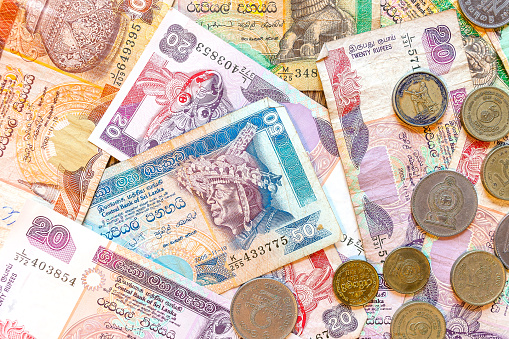Sri Lanka’s fiscal austerity measures are painful; but necessary step towards right direction
3 min read
Sri Lanka money Rupee, banknotes and coins.
The new revenue proposals plan to raise Rs. 295 billion per annum, constituting about 20% incremental revenue assuming last year’s economic activity level, according to NDB Securities.
The austerity measures are likely to be painful in an environment where inflation is roaring, the economy is gradually recovering from the pandemic, and tight monetary reins are in place. However, these adjustments are a necessary evil ahead of the debt restructuring plans. A strong commitment to fiscal discipline and conformity to fiscal rules are pre-requisites for an IMF program and to (even) access short-term bridging loans.
The tax cuts in late-2019 are estimated to have shaved off around Rs. 500 billion in revenue, resulting in the budget deficit expanding to over 12% of GDP in 2021. This exerted pressure on multiple fronts. The lack of access to international capital markets, and entirely relying on domestic sources for deficit financing impacted the liquidity in the financial system, while the Central Bank’s monetary financing impacted price stability and the external value of the currency.
Sri Lanka’s elevated budget deficits are usually preceded by election cycles, due to poor fiscal discipline
and fiscal rule. In addition, the populace is used to welfarism and a ‘subsidy mindset’, which makes sustainable fiscal adjustments unpopular. However, we NDB Securities observe a change in perception towards some of these hard (yet necessary) reforms given the dire economic crisis.
It welcomed the less-steep hike in the VAT rate, which is an Indirect taxes are regressive by design. The VAT rate is increased from 8% to 12%, and the new rate is less than what it used to be (15%) prior to tax cuts in 2019. The VAT free threshold is revised down to LKR 120 Mn/annum vs. LKR 300 Mn. Restoring VAT to 2019 could have disproportionately impacted the low income households before.
The increase of existing standard Standard Corporate Income Tax (CIT) to 30% (from 24%) from October 2022 is considered to be another progressive tax proposal. The government is planning to raise nearly a fourth of incremental revenue through changes in the CIT. The revenue proposals also include the removal of certain tax holidays. . Foreign direct investments to Sri Lanka have been significantly low over the past few years (generally USD 1 Bn per annum), despite giving years of fiscal incentives, by way of tax breaks. Tax exemptions and holidays given by the Board of Investment (BOI) have led to approximately 1% of GDP revenue loss per annum (Kelegama, 2009). In 2016, the Ceylon Chamber of Commerce (CCC) proposed that all the minimum investment thresholds, tax holidays, and associated conditionalities need to be revisited/amended in order to be more realistic and have contemporary relevance while providing a
greater focus on attracting FDI in line with the country’s development needs
Empirically, fiscal adjustments are usually followed by a contraction in growth in the short run. Given the effect of the pandemic and the recent monetary tightening, Sri Lanka’s fiscal consolidation measures are likely to come at the expense of growth temporarily.However, the persistent fiscal weaknesses have led to serious macroeconomic imbalances in terms of price stability, financial systems’ stability, debt servicing and a weak currency, which call for making fiscal austerity a priority.